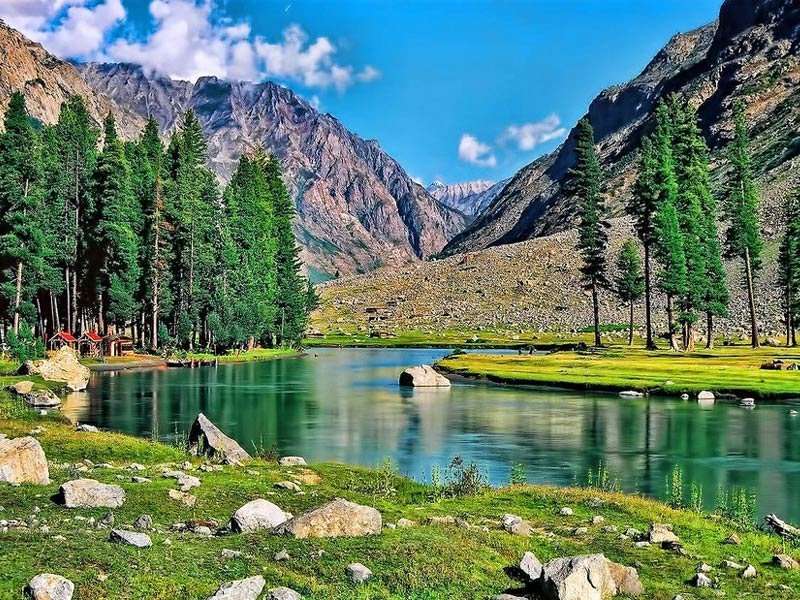Pakistan is a land of breathtaking landscapes, rich culture, and deep-rooted history. Nestled in South Asia, this beautiful country offers a diverse range of experiences for travelers. From towering mountains and lush valleys to ancient civilizations and vibrant cities, a tour of Pakistan is nothing short of an adventure of a lifetime. This article will guide you through the top destinations, cultural highlights, and practical travel tips to make your Pakistan tour truly unforgettable.
1. Introduction to Pakistan
Pakistan, officially the Islamic Republic of Pakistan, is a country of immense geographical and cultural diversity. It is bordered by India, China, Afghanistan, and Iran, and has a coastline along the Arabian Sea. The country is divided into four provinces: Punjab, Sindh, Khyber Pakhtunkhwa, and Balochistan, each offering unique tourist experiences.
2. Why Visit Pakistan?
a. Natural Beauty
From the mighty peaks of the Karakoram Range to the serene beaches of Gwadar, Pakistan is home to some of the world’s most stunning natural sights.
b. Historical and Cultural Heritage
With a history dating back to the Indus Valley Civilization, Pakistan is rich in archaeological treasures, ancient forts, mosques, and colonial-era buildings.
c. Warm Hospitality
Pakistanis are known for their generosity and hospitality. Visitors often speak highly of the warm welcome they receive from locals.
d. Affordable Travel
Compared to many other tourist destinations, traveling in Pakistan is quite affordable, making it an attractive option for budget travelers.
3. Top Tourist Destinations in Pakistan
a. Northern Areas
i. Hunza Valley
Located in Gilgit-Baltistan, Hunza is famous for its stunning mountainous landscapes, peaceful villages, and welcoming people. Don’t miss Attabad Lake, Altit Fort, and the view from Eagle’s Nest.
ii. Skardu
A gateway to some of the highest peaks in the world including K2. Popular sites include Shangrila Resort, Shigar Fort, and Deosai National Park.
iii. Fairy Meadows
Near Nanga Parbat, the world’s ninth-highest mountain, Fairy Meadows is a magical alpine destination offering camping and trekking opportunities.
b. Punjab
i. Lahore
The cultural heart of Pakistan, Lahore is famous for its historic architecture, food streets, and vibrant bazaars. Key attractions include the Badshahi Mosque, Lahore Fort, Shalimar Gardens, and the Wagah Border ceremony.
ii. Multan
Known as the “City of Saints,” Multan boasts centuries-old shrines, mosques, and a rich tradition of handicrafts and pottery.
c. Sindh
i. Karachi
Pakistan’s largest city and commercial hub, Karachi is a mix of modern skyscrapers and colonial architecture. Visit Clifton Beach, Quaid-e-Azam’s Mausoleum, and the Pakistan Maritime Museum.
ii. Mohenjo-Daro
One of the most important archaeological sites in South Asia, Mohenjo-Daro offers a glimpse into the ancient Indus Valley Civilization.
d. Khyber Pakhtunkhwa
i. Swat Valley
Often called the “Switzerland of Pakistan,” Swat is known for its lush green valleys, rivers, and snow-covered peaks.
ii. Peshawar
One of the oldest cities in Asia, Peshawar is rich in Pashtun culture, historic bazaars, and food. Don’t miss visiting Qissa Khwani Bazaar and Bala Hisar Fort.
e. Balochistan
i. Quetta
Surrounded by rugged mountains, Quetta is a culturally vibrant city known for its dry fruits, bazaars, and Hazarganji-Chiltan National Park.
ii. Hingol National Park
Home to surreal landscapes, including the famous Princess of Hope statue and the Hingol River, it is one of Pakistan’s largest national parks.
4. Cultural Experiences
a. Local Festivals
Participating in local festivals such as Basant, Eid celebrations, and the Shandur Polo Festival offers a deep insight into Pakistani culture.
b. Traditional Food
Pakistani cuisine is flavorful and diverse. Some must-try dishes include biryani, nihari, chapli kebab, and saag with makki di roti.
c. Music and Dance
Folk music and traditional dances like bhangra, attan, and sufi qawwalis are a vital part of the cultural experience.
5. Travel Tips for a Safe and Enjoyable Tour
a. Visa and Documentation
Most travelers need a visa to enter Pakistan. The government offers e-visa facilities for many countries.
b. Best Time to Visit
The best time to visit northern Pakistan is from April to October. Southern parts are more accessible during the cooler months from November to February.
c. Transport and Accommodation
Major cities have a range of hotels from budget to luxury. Buses, domestic flights, and ride-hailing apps are common means of transport.
d. Language and Communication
Urdu is the national language, but English is widely spoken in urban areas. Learning a few local phrases can enhance your experience.
e. Health and Safety
Stay updated on travel advisories. It is advisable to drink bottled water and take necessary health precautions.
6. Responsible Tourism in Pakistan
Tourists are encouraged to respect local customs and traditions, minimize environmental impact, and support local businesses by buying handmade crafts and using local guides.
7. Conclusion
A tour of Pakistan is not just a vacation; it’s an exploration of majestic landscapes, ancient traditions, and warm-hearted people. Whether you’re trekking in the north, exploring the ruins of ancient civilizations, or enjoying a cup of chai in a bustling bazaar, Pakistan has something to offer every traveler. As tourism continues to grow, the country is becoming a top destination for adventurers, history lovers, and cultural enthusiasts alike.



